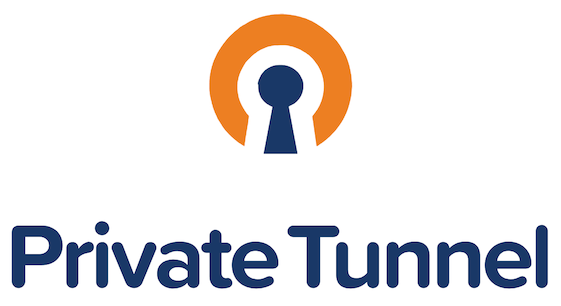Why Should Automated Software Testing as a Service Be a Priority for Companies Scaling Fast?

As companies grow, so do their software demands. More users, more transactions, and more complex integrations put tremendous pressure on software performance, reliability, and security. Without a robust testing strategy, businesses risk slow application performance, frequent system crashes, and costly downtime—all of which can drive customers away.
For fast-scaling companies, relying on manual testing alone is too slow and inefficient. With Automated Software Testing as a Service, businesses can speed up releases, reduce testing costs, and maintain high-quality software without burdening internal teams.
Let’s explore why Automated Software Testing as a Service should be a top priority for fast-growing companies and how it helps businesses scale without sacrificing software quality.
The Challenges of Scaling Software Without Automated Testing
When businesses grow, their software must handle:
- Increased user traffic – More users mean higher demand on servers and databases.
- Frequent software updates – New features, bug fixes, and performance enhancements require continuous testing.
- Multiple platform integrations – Expanding businesses often integrate with third-party services, APIs, and cloud environments, increasing testing complexity.
- Security and compliance risks – As user data grows, security testing becomes critical to prevent breaches and meet regulatory requirements.
Without automation, testing slows down development, delaying new features and causing frustrating user experiences.
Example: A SaaS company scaling from 10,000 to 500,000 users experienced slow checkout processing times due to inefficient database queries. Without automated testing, the issue went undetected until customers complained. An automated test suite could have caught performance bottlenecks before they impacted users.
What Is Automated Software Testing as a Service (TaaS)?
Automated Software Testing as a Service (TaaS) is an outsourced, cloud-based solution where a third-party testing provider handles:
- Test automation framework setup and execution
- Continuous integration and deployment testing (CI/CD)
- Performance, security, and functional testing
- Regression and cross-platform testing
Instead of hiring an in-house automation team, companies leverage external expertise to maintain software quality while focusing on business growth.
Why Automated Software Testing as a Service Is Essential for Scaling Companies
a) Faster Software Releases Without Compromising Quality
- Automates repetitive tests, reducing testing time from days to hours.
- Runs parallel tests across multiple devices, browsers, and environments.
- Ensures bug-free releases, even with frequent software updates.
Example: A growing fintech startup needed to release bi-weekly updates to comply with banking regulations. With manual testing, each release took two weeks to validate, delaying deployments. After switching to Automated Testing as a Service, they cut testing time by 80%, allowing faster releases without sacrificing quality.
b) Reduced Testing Costs Compared to In-House Teams
Hiring an in-house test automation team requires:
- Expensive salaries for automation engineers
- Costs for test infrastructure and tools
- Ongoing maintenance of test scripts and frameworks
With Automated Testing as a Service, businesses:
- Eliminate the need for full-time test engineers
- Pay only for the tests they need
- Access enterprise-grade automation tools without investing in licenses
Example: A healthcare company reduced testing costs by 60% after outsourcing test automation, avoiding tool licensing fees and infrastructure costs.
c) Detects Bugs Earlier to Prevent Costly Fixes Post-Release
- Bugs found in production can cost 10x more to fix than those found during development.
- Automated testing catches defects early, preventing expensive downtime and negative customer experiences.
- Runs continuous regression tests after every code change.
- Detects performance bottlenecks before users experience slowdowns.
- Prevents deployment of faulty code, reducing post-release patching.
Example: A logistics startup’s tracking system crashed under heavy traffic during a product launch. Automated load testing could have identified scalability issues beforehand, preventing revenue loss from failed deliveries.
d) Scalability Without Adding Manual Testing Burdens
- As businesses grow, so do their software testing needs. Manual testing teams often struggle to keep up with new features, platform expansions, and system integrations.
- TaaS scales test coverage as companies grow—no need to hire more testers.
- Handles high volumes of test cases simultaneously, reducing bottlenecks.
- Integrates seamlessly with Agile and DevOps workflows.
Example: A growing online marketplace expanded to five new countries and needed localization testing. Instead of hiring testers for each region, they used Automated Testing as a Service to validate functionality across multiple languages, currencies, and tax systems.
e) Enhanced Security Testing to Protect Growing User Data
Fast-growing companies handle increasing amounts of sensitive user data, making security vulnerabilities a major risk. Automated security testing:
- Detects vulnerabilities in APIs, databases, and login authentication.
- Performs penetration testing to identify hacking risks.
- Ensures compliance with security standards like GDPR, HIPAA, and PCI DSS.
Example: A payment processing startup discovered API vulnerabilities during an automated penetration test, preventing a potential security breach that could have exposed customer payment details.
How to Successfully Implement Automated Software Testing as a Service
For companies scaling fast, successful TaaS adoption requires:
Choosing the Right Testing Provider
- Select a provider with experience in your industry and technology stack.
- Ensure they offer CI/CD integration for continuous testing.
- Look for expertise in functional, performance, and security testing.
Defining a Clear Automation Strategy
- Identify which tests should be automated (e.g., regression, API, load testing).
- Set performance benchmarks to measure software stability.
- Automate tests for high-risk areas like checkout flows and login authentication.
Ensuring Seamless Integration with Agile and DevOps
- Use automation tools that integrate with Jenkins, GitLab, Jira, and cloud environments.
- Schedule automated tests after every code change.
- Analyze reports in real time to make quick fixes.
Example: A DevOps-driven SaaS platform integrated Automated Testing as a Service into their CI/CD pipeline, reducing post-deployment bug reports by 70%.
The Future of Test Automation as a Service
As more companies embrace cloud computing, AI-driven testing, and continuous deployment, TaaS will become even more critical for fast-scaling businesses.
Upcoming Trends:
- AI-powered test automation – Using AI to detect patterns and predict potential failures.
- Codeless automation tools – Making automation accessible to non-technical testers.
- Blockchain-based test security – Enhancing data integrity for financial and healthcare apps.
- IoT and wearable testing – Expanding automated testing to smart devices and embedded systems.
Why TaaS Is the Best Testing Strategy for Scaling Businesses
For companies experiencing rapid growth, Automated Software Testing as a Service is not a luxury—it’s a necessity. The cost of slow testing, missed bugs, and security vulnerabilities far outweighs the investment in automation.
- Faster software releases with fewer defects.
- Lower testing costs compared to in-house teams.
- Scalability to handle growing test demands.
- Stronger security and compliance protection.
Why Choose Lighthouse Technologies for Automated Testing as a Service?
Lighthouse Technologies provides enterprise-grade test automation solutions, helping businesses:
- Deliver bug-free releases on time.
- Reduce testing costs while improving efficiency.
- Achieve continuous testing integration for Agile and DevOps teams.
What's Your Reaction?
























